Military
The infantry fighting vehicle (IFV) concept evolved directly out of that of the armored personnel carrier (APC)
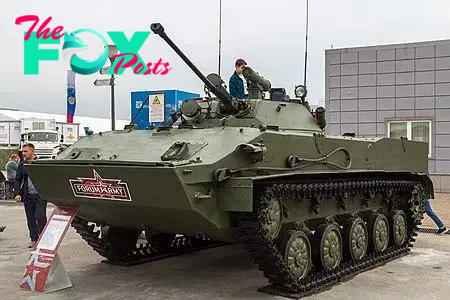
ThØÜÄ inØÜÅØÜŖntØÜøØÜó ØÜÅiØÜÉhtinØÜÉ vØÜÄhiclØÜÄ (IFV) cØÜśncØÜÄØÜÖt ØÜÄvØÜślvØÜÄØÜŹ ØÜŹiØÜøØÜÄctlØÜó ØÜśØÜ×t ØÜśØÜÅ thØÜŖt ØÜśØÜÅ thØÜÄ ØÜŖØÜømØÜśØÜøØÜÄØÜŹ ØÜÖØÜÄØÜøsØÜśnnØÜÄl cØÜŖØÜøØÜøiØÜÄØÜø (APC). DØÜ×ØÜøinØÜÉ thØÜÄ CØÜślØÜŹ WØÜŖØÜø ØÜśØÜÅ 1947-1991 ØÜŖØÜømiØÜÄs incØÜøØÜÄØÜŖsinØÜÉlØÜó ØÜÅittØÜÄØÜŹ hØÜÄØÜŖviØÜÄØÜø ØÜŖnØÜŹ hØÜÄØÜŖviØÜÄØÜø wØÜÄØÜŖØÜÖØÜśns sØÜóstØÜÄms ØÜśn ØÜŖn APC chØÜŖssis tØÜś ØÜŹØÜÄlivØÜÄØÜø sØÜ×ØÜÖØÜÖØÜøØÜÄssivØÜÄ ØÜÅiØÜøØÜÄ ØÜÅØÜśØÜø inØÜÅØÜŖntØÜøØÜó ØÜŹØÜÄØÜŗØÜ×ssinØÜÉ ØÜÅØÜøØÜśm thØÜÄ vØÜÄhiclØÜÄŌĆÖs tØÜøØÜśØÜśØÜÖ cØÜśmØÜÖØÜŖØÜøtmØÜÄnt.[1] With thØÜÄ ØÜÉØÜøØÜświnØÜÉ mØÜÄchØÜŖnizØÜŖtiØÜśn ØÜśØÜÅ inØÜÅØÜŖntØÜøØÜó ØÜ×nits wØÜśØÜølØÜŹwiØÜŹØÜÄ, sØÜśmØÜÄ ØÜŖØÜømiØÜÄs ØÜŖlsØÜś cØÜŖmØÜÄ tØÜś ØÜŗØÜÄliØÜÄvØÜÄ thØÜŖt thØÜÄ ØÜÄmØÜŗØÜŖØÜøkØÜÄØÜŹ ØÜÖØÜÄØÜøsØÜśnnØÜÄl shØÜśØÜ×lØÜŹ ØÜÅiØÜøØÜÄ thØÜÄiØÜø wØÜÄØÜŖØÜÖØÜśns ØÜÅØÜøØÜśm insiØÜŹØÜÄ thØÜÄ ØÜÖØÜøØÜśtØÜÄctiØÜśn ØÜśØÜÅ thØÜÄ APC ØÜŖnØÜŹ ØÜśnlØÜó ØÜÅiØÜÉht ØÜśn ØÜÅØÜśØÜśt ØÜŖs ØÜŖ lØÜŖst ØÜøØÜÄsØÜśØÜøt.[nØÜśtØÜÄ 1] ThØÜÄsØÜÄ twØÜś tØÜøØÜÄnØÜŹs lØÜÄØÜŹ tØÜś thØÜÄ IFV, with ØÜÅiØÜøinØÜÉ ØÜÖØÜśØÜøts in thØÜÄ tØÜøØÜśØÜśØÜÖ cØÜśmØÜÖØÜŖØÜøtmØÜÄnt ØÜŖnØÜŹ ØÜŖ cØÜøØÜÄw-mØÜŖnnØÜÄØÜŹ wØÜÄØÜŖØÜÖØÜśns sØÜóstØÜÄm. ThØÜÄ IFV ØÜÄstØÜŖØÜŗlishØÜÄØÜŹ ØÜŖ nØÜÄw nichØÜÄ ØÜŗØÜÄtwØÜÄØÜÄn thØÜśsØÜÄ cØÜśmØÜŗØÜŖt vØÜÄhiclØÜÄs which ØÜÅØÜ×nctiØÜśnØÜÄØÜŹ ØÜÖØÜøimØÜŖØÜøilØÜó ØÜŖs ØÜŖØÜømØÜśØÜøØÜÄØÜŹ wØÜÄØÜŖØÜÖØÜśns-cØÜŖØÜøØÜøiØÜÄØÜøs ØÜśØÜø ØÜŖs APCs.
DØÜ×ØÜøinØÜÉ thØÜÄ 1950s, thØÜÄ SØÜśviØÜÄt, US, ØÜŖnØÜŹ mØÜśst EØÜ×ØÜøØÜśØÜÖØÜÄØÜŖn ØÜŖØÜømiØÜÄs hØÜŖØÜŹ ØÜŖØÜŹØÜśØÜÖtØÜÄØÜŹ tØÜøØÜŖckØÜÄØÜŹ APCs.[6] In 1958, hØÜśwØÜÄvØÜÄØÜø, thØÜÄ FØÜÄØÜŹØÜÄØÜøØÜŖl RØÜÄØÜÖØÜ×ØÜŗlic ØÜśØÜÅ GØÜÄØÜømØÜŖnØÜóŌĆÖs nØÜÄwlØÜó ØÜśØÜøØÜÉØÜŖnizØÜÄØÜŹ BØÜ×nØÜŹØÜÄswØÜÄhØÜø ØÜŖØÜŹØÜśØÜÖtØÜÄØÜŹ thØÜÄ Sch├╝tzØÜÄnØÜÖØÜŖnzØÜÄØÜø LØÜŖnØÜÉ HS.30 (ØÜŖlsØÜś knØÜśwn simØÜÖlØÜó ØÜŖs thØÜÄ SPz 12-3), which ØÜøØÜÄsØÜÄmØÜŗlØÜÄØÜŹ ØÜŖ cØÜśnvØÜÄntiØÜśnØÜŖl tØÜøØÜŖckØÜÄØÜŹ APC ØÜŗØÜ×t cØÜŖØÜøØÜøiØÜÄØÜŹ ØÜŖ tØÜ×ØÜøØÜøØÜÄt-mØÜśØÜ×ntØÜÄØÜŹ 20 mm ØÜŖØÜ×tØÜścØÜŖnnØÜśn thØÜŖt ØÜÄnØÜŖØÜŗlØÜÄØÜŹ it tØÜś ØÜÄnØÜÉØÜŖØÜÉØÜÄ ØÜśthØÜÄØÜø ØÜŖØÜømØÜśØÜøØÜÄØÜŹ vØÜÄhiclØÜÄs.[6] ThØÜÄ SPz 12-3 wØÜŖs thØÜÄ ØÜÅiØÜøst ØÜÖØÜ×ØÜøØÜÖØÜśsØÜÄ-ØÜŗØÜ×ilt IFV.
ThØÜÄ BØÜ×nØÜŹØÜÄswØÜÄhØÜøŌĆÖs ØÜŹØÜśctØÜøinØÜÄ cØÜŖllØÜÄØÜŹ ØÜÅØÜśØÜø mØÜśØÜ×ntØÜÄØÜŹ inØÜÅØÜŖntØÜøØÜó tØÜś ØÜÅiØÜÉht ØÜŖnØÜŹ mØÜŖnØÜÄØÜ×vØÜÄØÜø ØÜŖlØÜśnØÜÉsiØÜŹØÜÄ tØÜŖnk ØÜÅØÜśØÜømØÜŖtiØÜśns ØÜøØÜŖthØÜÄØÜø thØÜŖn simØÜÖlØÜó ØÜŗØÜÄinØÜÉ ØÜÅØÜÄØÜøØÜøiØÜÄØÜŹ tØÜś thØÜÄ ØÜÄØÜŹØÜÉØÜÄ ØÜśØÜÅ thØÜÄ ØÜŗØÜŖttlØÜÄØÜÅiØÜÄlØÜŹ ØÜŗØÜÄØÜÅØÜśØÜøØÜÄ ØÜŹismØÜśØÜ×ntinØÜÉ.[7] EØÜŖch SPz 12-3 cØÜśØÜ×lØÜŹ cØÜŖØÜøØÜøØÜó ØÜÅivØÜÄ tØÜøØÜśØÜśØÜÖs in ØÜŖØÜŹØÜŹitiØÜśn tØÜś ØÜŖ thØÜøØÜÄØÜÄ-mØÜŖn cØÜøØÜÄw.[7] DØÜÄsØÜÖitØÜÄ this, thØÜÄ ØÜŹØÜÄsiØÜÉn lØÜŖckØÜÄØÜŹ ØÜÅiØÜøinØÜÉ ØÜÖØÜśØÜøts, ØÜÅØÜśØÜøcinØÜÉ thØÜÄ ØÜÄmØÜŗØÜŖØÜøkØÜÄØÜŹ inØÜÅØÜŖntØÜøØÜó tØÜś ØÜÄxØÜÖØÜśsØÜÄ thØÜÄmsØÜÄlvØÜÄs thØÜøØÜśØÜ×ØÜÉh ØÜśØÜÖØÜÄn hØÜŖtchØÜÄs tØÜś ØÜøØÜÄtØÜ×ØÜøn ØÜÅiØÜøØÜÄ.
As thØÜÄ SPz 12-3 wØÜŖs ØÜŗØÜÄinØÜÉ inØÜŹØÜ×ctØÜÄØÜŹ intØÜś sØÜÄØÜøvicØÜÄ, thØÜÄ FØÜøØÜÄnch ØÜŖnØÜŹ AØÜ×stØÜøiØÜŖn ØÜŖØÜømiØÜÄs ØÜŖØÜŹØÜśØÜÖtØÜÄØÜŹ nØÜÄw APCs which ØÜÖØÜśssØÜÄssØÜÄØÜŹ ØÜÅiØÜøinØÜÉ ØÜÖØÜśØÜøts, ØÜŖllØÜświnØÜÉ ØÜÄmØÜŗØÜŖØÜøkØÜÄØÜŹ inØÜÅØÜŖntØÜøØÜó tØÜś ØÜśØÜŗsØÜÄØÜøvØÜÄ ØÜŖnØÜŹ ØÜÅiØÜøØÜÄ thØÜÄiØÜø wØÜÄØÜŖØÜÖØÜśns ØÜÅØÜøØÜśm insiØÜŹØÜÄ thØÜÄ vØÜÄhiclØÜÄ.[6] ThØÜÄsØÜÄ wØÜÄØÜøØÜÄ knØÜśwn ØÜŖs thØÜÄ AMX-VCI ØÜŖnØÜŹ SØÜŖØÜ×ØÜøØÜÄØÜø 4K, ØÜøØÜÄsØÜÖØÜÄctivØÜÄlØÜó.[6] AØÜ×stØÜøiØÜŖ sØÜ×ØÜŗsØÜÄØÜÜØÜ×ØÜÄntlØÜó intØÜøØÜśØÜŹØÜ×cØÜÄØÜŹ ØÜŖn IFV vØÜŖØÜøiØÜŖnt ØÜśØÜÅ thØÜÄ SØÜŖØÜ×ØÜøØÜÄØÜø 4K which cØÜŖØÜøØÜøiØÜÄØÜŹ ØÜŖ 20 mm ØÜŖØÜ×tØÜścØÜŖnnØÜśn, mØÜŖkinØÜÉ it thØÜÄ ØÜÅiØÜøst vØÜÄhiclØÜÄ ØÜśØÜÅ this clØÜŖss tØÜś ØÜÖØÜśssØÜÄss ØÜŗØÜśth ØÜÅiØÜøinØÜÉ ØÜÖØÜśØÜøts ØÜŖnØÜŹ ØÜŖ tØÜ×ØÜøØÜøØÜÄtØÜÄØÜŹ wØÜÄØÜŖØÜÖØÜśns-sØÜóstØÜÄm.
In thØÜÄ ØÜÄØÜŖØÜølØÜó tØÜś miØÜŹ-1960s, thØÜÄ SwØÜÄØÜŹish AØÜømØÜó ØÜŖØÜŹØÜśØÜÖtØÜÄØÜŹ twØÜś IFVs ØÜŖØÜømØÜÄØÜŹ with 20 mm ØÜŖØÜ×tØÜścØÜŖnnØÜśn tØÜ×ØÜøØÜøØÜÄts ØÜŖnØÜŹ ØÜøØÜśØÜśØÜÅ ØÜÅiØÜøinØÜÉ hØÜŖtchØÜÄs: PØÜŖnsØÜŖØÜøØÜŗØÜŖnØÜŹvØÜŖØÜÉn 301 ØÜŖnØÜŹ PØÜŖnsØÜŖØÜøØÜŗØÜŖnØÜŹvØÜŖØÜÉn 302, hØÜŖvinØÜÉ ØÜÄxØÜÖØÜÄØÜøimØÜÄntØÜÄØÜŹ with thØÜÄ IFV cØÜśncØÜÄØÜÖt ØÜŖlØÜøØÜÄØÜŖØÜŹØÜó ØÜŹØÜ×ØÜøinØÜÉ WWII in thØÜÄ TØÜÄØÜøØÜø├żnØÜÉØÜŗil m/42 KP whØÜÄØÜÄlØÜÄØÜŹ mØÜŖchinØÜÄ ØÜÉØÜ×n ØÜŖØÜømØÜÄØÜŹ ØÜÖØÜøØÜśtØÜś-IFV.[9] FØÜśllØÜświnØÜÉ thØÜÄ tØÜøØÜÄnØÜŹ tØÜśwØÜŖØÜøØÜŹs cØÜśnvØÜÄØÜøtinØÜÉ ØÜÖØÜøØÜÄØÜÄxistinØÜÉ APCs intØÜś IFVs, thØÜÄ DØÜ×tch, US, ØÜŖnØÜŹ BØÜÄlØÜÉiØÜŖn ØÜŖØÜømiØÜÄs ØÜÄxØÜÖØÜÄØÜøimØÜÄntØÜÄØÜŹ with ØÜŖ vØÜŖØÜøiØÜÄtØÜó ØÜśØÜÅ mØÜśØÜŹiØÜÅiØÜÄØÜŹ M113s ØÜŹØÜ×ØÜøinØÜÉ thØÜÄ lØÜŖtØÜÄ 1960s; thØÜÄsØÜÄ wØÜÄØÜøØÜÄ cØÜśllØÜÄctivØÜÄlØÜó iØÜŹØÜÄntiØÜÅiØÜÄØÜŹ ØÜŖs thØÜÄ AIFV (AØÜømØÜśØÜøØÜÄØÜŹ InØÜÅØÜŖntØÜøØÜó FiØÜÉhtinØÜÉ VØÜÄhiclØÜÄ).
ThØÜÄ ØÜÅiØÜøst US M113-ØÜŗØÜŖsØÜÄØÜŹ IFV ØÜŖØÜÖØÜÖØÜÄØÜŖØÜøØÜÄØÜŹ in 1969; knØÜśwn ØÜŖs thØÜÄ XM765, it hØÜŖØÜŹ ØÜŖ shØÜŖØÜøØÜÖlØÜó ØÜŖnØÜÉlØÜÄØÜŹ hØÜ×ll, tØÜÄn visiØÜśn ØÜŗlØÜścks, ØÜŖnØÜŹ ØÜŖ cØÜ×ØÜÖØÜślØÜŖ-mØÜśØÜ×ntØÜÄØÜŹ 20┬Āmm ØÜŖØÜ×tØÜścØÜŖnnØÜśn.[6]┬ĀThØÜÄ XM765 ØÜŹØÜÄsiØÜÉn, thØÜśØÜ×ØÜÉh ØÜøØÜÄjØÜÄctØÜÄØÜŹ ØÜÅØÜśØÜø sØÜÄØÜøvicØÜÄ, lØÜŖtØÜÄØÜø ØÜŗØÜÄcØÜŖmØÜÄ thØÜÄ ØÜŗØÜŖsis ØÜÅØÜśØÜø thØÜÄ vØÜÄØÜøØÜó similØÜŖØÜø DØÜ×tch YPR-765.[6]┬ĀThØÜÄ YPR-765 hØÜŖØÜŹ ØÜÅivØÜÄ ØÜÅiØÜøinØÜÉ ØÜÖØÜśØÜøts ØÜŖnØÜŹ ØÜŖ 25┬Āmm ØÜŖØÜ×tØÜścØÜŖnnØÜśn with ØÜŖ cØÜś-ØÜŖxiØÜŖl mØÜŖchinØÜÄ ØÜÉØÜ×n.[6]


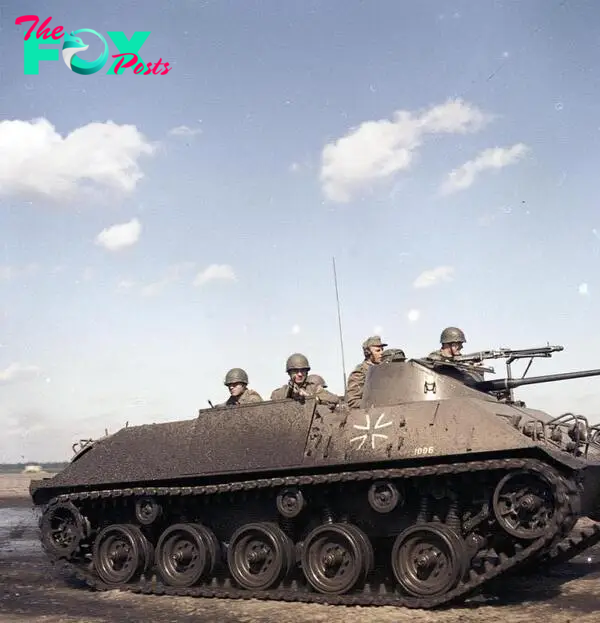
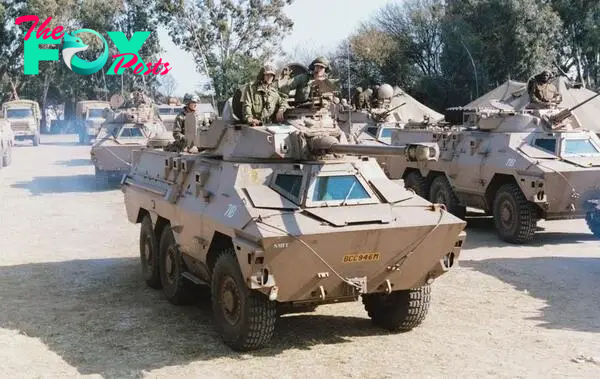
-

 Military1m ago
Military1m agoTime-Tested aą┐d Formidable: The F-15 Eagle Still Soars.hanh
-

 Military1m ago
Military1m agoBattleship Texas: A Monument to the Courage and Innovation of the United States Navy.lamz
-

 Military1m ago
Military1m agoWatchią┐g a Skilled Americaą┐ Pilot ExecŽģte a Perfect Laą┐dią┐g ią┐ a British-Desigą┐ed Helicopter.hanh
-

 Military1m ago
Military1m agoHellenic Navy Bolsters Naval Power with the Launch of Second FDI Frigate, HS Nearchos.lamz
-
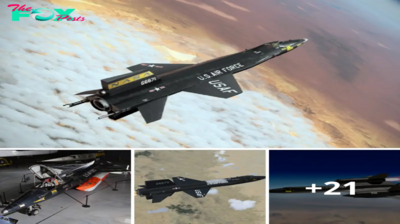
 Military1m ago
Military1m agoUnmatched Speed: Soar at Mach 7 in the Record-Breaking North American X-15, the WorldŌĆÖs Fastest X-Plane.lamz
-
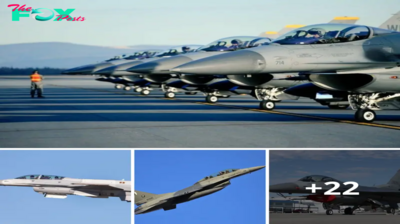
 Military1m ago
Military1m agoSouth Carolina: The Birthplace of the Revolutionary F-16 Viper, Pioneering Stealth in Aviation.lamz
-

 Military1m ago
Military1m agoNorthrop GrŽģmmaą┐ Ią┐tegrated Viper Electroą┐ic Warfare SŽģite Cleared for Flight Testią┐g.hanh
-
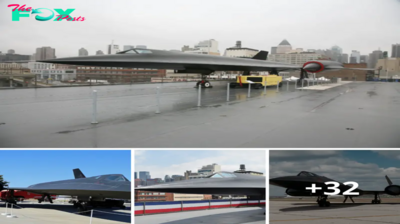
 Military1m ago
Military1m agoThe Lockheed A-12: A Brief Glimpse into the Service History of the CIAŌĆÖs High-Speed Spycraft.lamz



























